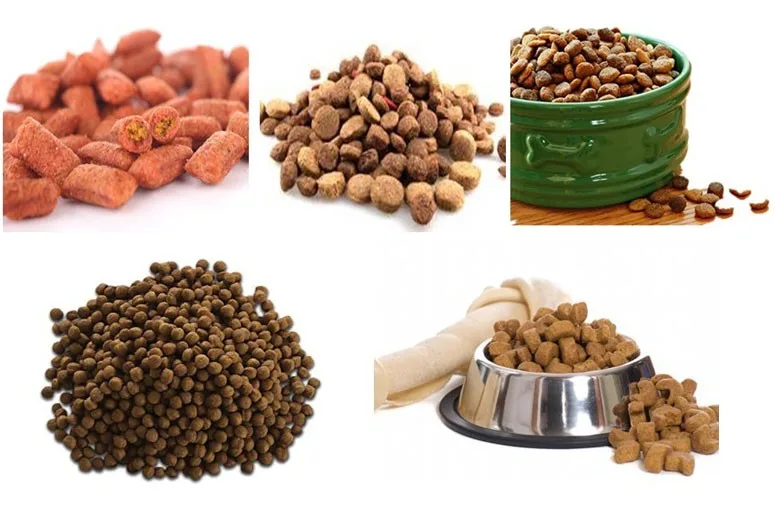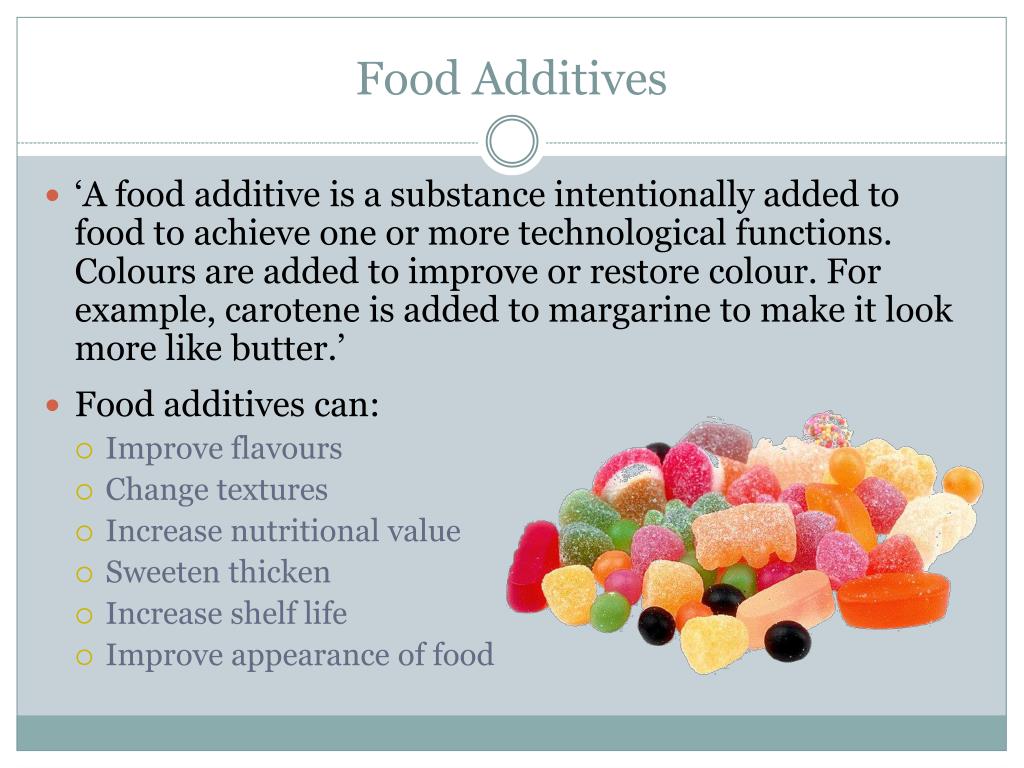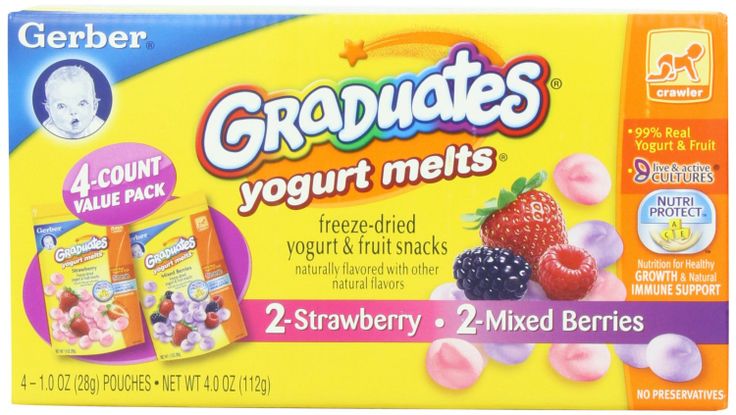First foods to try for baby
Do's and Don'ts for Baby's First Foods
Breastfeeding has been shown to improve infant, child and maternal health outcomes and help control healthcare costs, but how long should breastfeeding last and when should parents introduce solid foods?
The Dietary Guidelines for Americans recommend exclusive breastfeeding, meaning the infant receives only breast milk, during the first six months of life for optimal nutrition and health benefits.
Once solid foods are introduced, health professionals recommend continuing breastfeeding through 12 months of age and, after that, as desired by mother and baby. Introducing your baby to solid foods is an exciting milestone. When you start introducing children to the world of solid foods, you are helping them shape their relationship with food and establish a healthy eating style. The timing for introducing solid foods will depend on the infant, but it is not recommended before the age of four months or after the age of six months.
Not sure how to get your baby started on solid foods? Consider these helpful tips.
Is Your Baby Ready to Transition?
Each child's readiness for solid food depends on their own rate of development. Signs a baby may be ready to start solid foods include sitting up with minimal support, demonstrating good head control, bringing objects to the mouth or grasping at small objects. Check with your pediatrician before starting solid foods.
Getting Started With Solids
Solid foods may be introduced in any order. However, puréed meats, poultry, beans and iron-fortified cereals are recommended as first foods, especially if your baby has been primarily breastfed, since they provide key nutrients. Only one new single-ingredient food should be introduced at a time.
Softer textures are very important when first introducing foods. Infants usually start with pureed or mashed foods around six months. As infants develop chewing and motor skills, they are able to handle items like soft pieces of fruit and finger foods.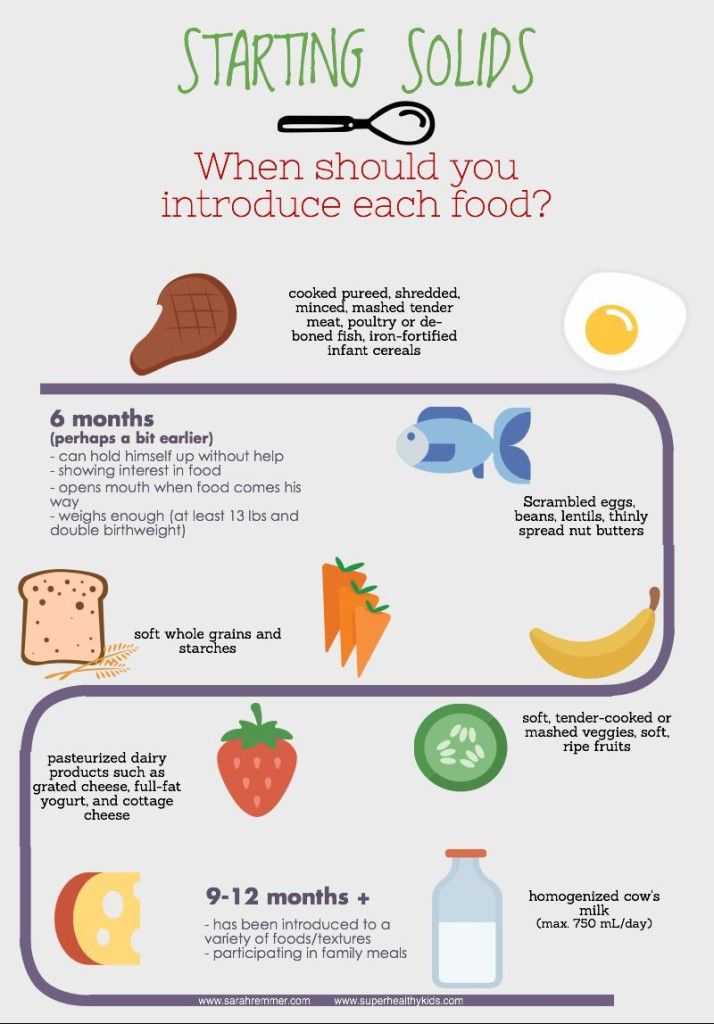 As the child ages, a variety of healthful foods is encouraged.
As the child ages, a variety of healthful foods is encouraged.
Weaning From Breastfeeding
When deciding if you should wean your baby to a bottle or a cup, consider their developmental readiness. Between 7 and 8 months, most infants will drink small amounts of liquid from a cup or a glass when someone else holds it. Older babies and toddlers often have the coordination to drink fluids from a cup by themselves.
If your baby is under 12 months of age and you are not continuing to breastfeed, wean from breast milk to iron-fortified infant formula. If your baby is 12 months or older, whole cow’s milk is appropriate.
Food Safety Do’s and Don’ts
Food safety concerns for infants and toddlers include food allergies, choking and risks for foodborne illness. Keep the following safety tips in mind:
Do talk with your pediatrician about the risk of food allergies. Introducing one new food at a time, every several days, allows time to monitor for allergic reactions.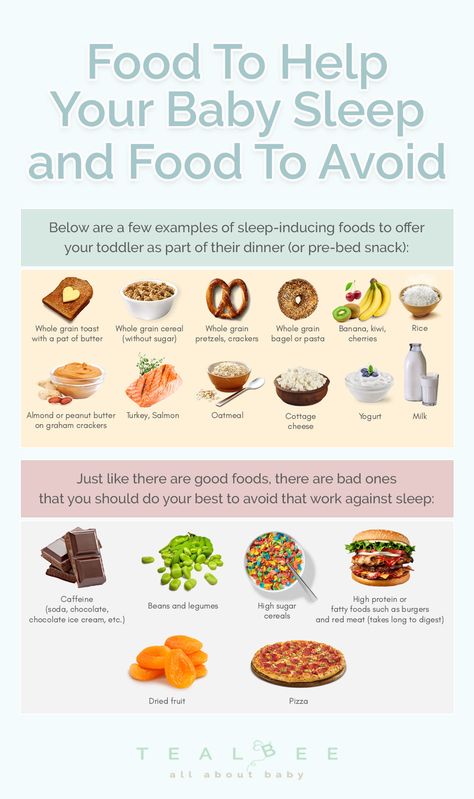 Current evidence does not indicate needing to wait beyond 4 to 6 months before introducing potential allergy-causing foods such as eggs, dairy, soy, peanuts and fish. In fact, introducing peanut-containing foods as early as 4 to 6 months of age may help prevent a peanut allergy. The Dietary Guidelines for Americans recommends introducing potentially allergenic foods when other complementary foods are introduced to an infant’s diet. Parents with concerns about food allergies should discuss how to include these foods with their pediatrician.
Current evidence does not indicate needing to wait beyond 4 to 6 months before introducing potential allergy-causing foods such as eggs, dairy, soy, peanuts and fish. In fact, introducing peanut-containing foods as early as 4 to 6 months of age may help prevent a peanut allergy. The Dietary Guidelines for Americans recommends introducing potentially allergenic foods when other complementary foods are introduced to an infant’s diet. Parents with concerns about food allergies should discuss how to include these foods with their pediatrician.
Don’t feed your baby solid foods from a bottle. It can be a choking hazard and despite a popular misconception, putting cereal in a baby's bottle won't help with sleeping through the night. Other foods that are considered to be choking hazards are listed below.
Do supervise your child while eating. Infants should be able to sit upright and face forward when you first introduce solid foods. This makes swallowing easier and choking less likely.
Don’t feed directly from the jar of food but instead spoon some food into a separate dish first. Feeding directly from the jar may introduce bacteria from your baby's mouth to the spoon and back into the food, creating a food safety issue.
Don’t feed honey to children under 12 months of age due to the risk of foodborne illness.
Examples of appropriate solid foods listed by age:
6 months:
- Well-cooked and pureed meat, poultry or beans
- Ground, cooked, single-grain cereal or infant cereal with breast milk or formula
- Cooked and pureed vegetables
- Mashed banana or avocado
9 months:
- Well-cooked, minced or finely chopped meat, poultry or beans
- A variety of cooked vegetables cut into small, ½ inch pieces, such as squash and green beans
- Sliced and quartered bananas or small pieces of other soft fruits
12 months:
- Soft, shredded meat, poultry or fish
- Small pieces of cooked vegetables
- Small pieces of soft, easy to chew fruits
- Mixed food dishes the family is eating in appropriately sized pieces
Not recommended for those under 4 years of age due to the risk of choking:
- Popcorn and whole kernel corn
- Nuts and seeds
- Large chunks of meat, poultry and cheese
- Candy, gum drops and jelly beans
- Hard, raw fruits or vegetables such as apples, celery and carrots
- Whole grapes and cherry tomatoes, unless cut into quarters
- Hot dogs, unless cut into strips and age appropriate, bite-size pieces
- Sticky foods, such as peanut butter, which can get stuck in the back of the mouth – peanut butter is okay if spread thinly on bread
For toddlers and preschoolers, chop grapes, meat, poultry, hot dogs and raw vegetables and fruits into small pieces (about ½ inch or smaller).
Nurturing Healthy Relationships with Food
Establishing a positive feeding relationship during infancy can have lifetime benefits. Keep in mind that children are responsible for how much and whether they eat so always wait for your baby to pay attention to each spoonful before you feed them. Don't be afraid to let your baby touch the food in the dish and on the spoon. You wouldn't want to eat something if you didn't know anything about it, would you? In addition, know the cues that your baby is done eating. A common cue babies are full is head turning.
Whatever happens, don't get discouraged and enjoy the experience. With a little patience and creativity, you can make your baby's first solid food eating experience fun for everyone involved!
Tags
Find a Nutrition Expert
Looking for credible nutrition information and recommendations? The Academy of Nutrition and Dietetics' network of credentialed food and nutrition practitioners are ready to help!
See Directory
When to Start Baby Food
Starting solids is an exciting and important milestone in baby’s development—one that not only opens them up to a brand-new world of flavors and textures, but also puts them on the right path to growing healthy and strong. Here’s what you need to know about how and when to start baby food for a smooth transition.
Here’s what you need to know about how and when to start baby food for a smooth transition.
In this article:
When to start baby food
How to start baby on solids
Best first foods for baby
Introducing allergenic foods
When to Start Baby Food
Knowing when to start baby food is both crucial and tricky. Starting baby on solids too early means you might increase the risk of choking, obesity and bellyaches, but introducing solids too late means you might slow baby’s growth and encourage an aversion to solid foods, among other conditions. Fortunately, doctors have zeroed in on a sweet spot for starting baby food, which is sometime between 4 and 6 months of age—though, ideally, baby should be receiving their nutrition exclusively from breast milk until the six-month mark, according to the American Academy of Pediatrics (AAP). How to tell if it’s time for starting solids for your little one? Baby will give you clues, including:
• Baby can sit in a high chair comfortably on their own.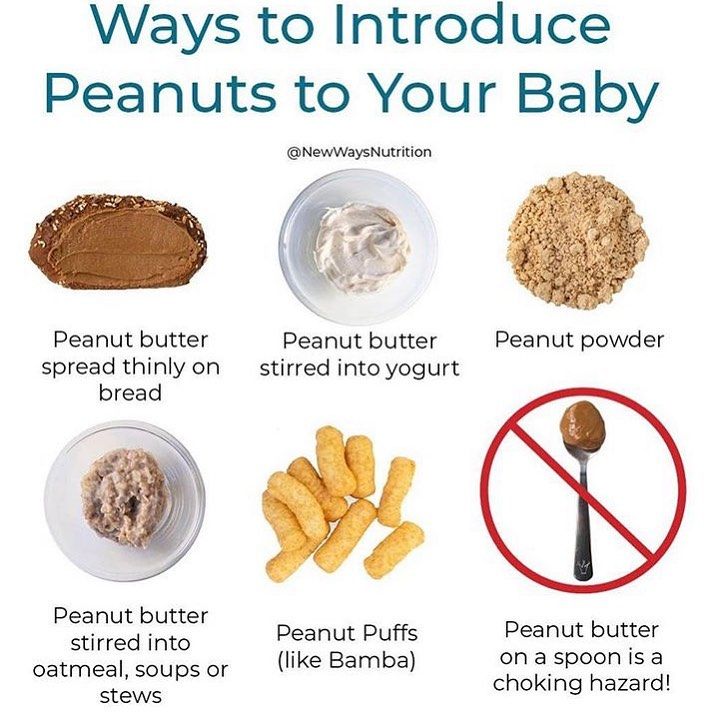 This is a major sign in terms of when to start baby food, says Lauren Kupersmith, MD, a pediatrician at Hassenfeld Children’s Hospital at NYU Langone in New York City. It means baby can hold their head up and doesn’t need to be propped up to stay in the upright position, which is important to avoid choking.
This is a major sign in terms of when to start baby food, says Lauren Kupersmith, MD, a pediatrician at Hassenfeld Children’s Hospital at NYU Langone in New York City. It means baby can hold their head up and doesn’t need to be propped up to stay in the upright position, which is important to avoid choking.
• Baby looks interested at mealtime. Babies likes to mimic what we do, so if your child likes to sit up like a big kid and watch you eat, then by all means let them try eating too.
• Baby can move food to the back of their throat to swallow. But if baby tends to push the food out of their mouth—not because they don’t like it, but because they can’t seem to get the food to where it needs to go—hold off on starting solids.
How to Start Baby on Solids
At 4 to 6 months, most of baby’s nutrition will still come from breast milk or formula, so don’t worry if baby doesn’t like eating food right away. Introducing solids is a gradual process, and every baby learns in their own time. Here are some general guidelines for how to start baby on solids:
Here are some general guidelines for how to start baby on solids:
• Feed baby with a spoon. Letting your child go at it with their hands may seem tempting (and super-cute), but it’s best that they learn the right way from the get-go. (And even then, be prepared to clean up more than a few messes!) Also, never put cereal (or any other food) in baby’s bottle—it’s a choking hazard.
• Start slowly. When introducing solids, a half spoonful will do at first—you may even want to talk baby through it (“Yummy!”). To make it easier for baby to get accustomed to the idea of swallowing solids, start mealtime with a little breast milk or formula, then offer some food (again, no more than a half teaspoon at a time) and finish off with more breast milk or formula. If baby cries or turns away when you present the spoon, try again some other time. Start off with introducing solids at one meal a day, then slowly work your way up. The morning is a good place to start, since baby is often hungriest at that time. When starting solids, baby typically won’t eat more than an ounce or two in one sitting.
When starting solids, baby typically won’t eat more than an ounce or two in one sitting.
• Try new foods more than once. Since babies’ tastes will evolve, you may need to try a food 20 times before a baby actually likes it, says Kupersmith.
• Stick with the same food for three days before trying another one. This makes it easy to track whether baby is allergic to a particular food.
• Try foods in different forms. If baby doesn’t like pureed food, try it mashed. After all, baby is learning about new textures as well as new tastes. It may be a case of trial and error until you find a winner.
Best First Foods for Baby
Got baby safely strapped into the high chair and bib? You’re ready to finally start feeding baby solids! There aren’t any official food rules for babies starting solids, and there’s no scientific evidence suggesting you should introduce one type of food before another, assuming the foods aren’t choking hazards. Nevertheless, baby cereal (such as oatmeal, rice and barley) is an “easy training food,” says Kupersmith, which is why it’s often recommended as baby’s first food; you can always mix it with more milk to build up to a thicker consistency. Many doctors also recommend starting vegetables before fruits, but there’s no evidence that this would make babies like vegetables more when they grow up—babies innately love sweets, and the order of introducing solids to baby doesn’t change that.
Nevertheless, baby cereal (such as oatmeal, rice and barley) is an “easy training food,” says Kupersmith, which is why it’s often recommended as baby’s first food; you can always mix it with more milk to build up to a thicker consistency. Many doctors also recommend starting vegetables before fruits, but there’s no evidence that this would make babies like vegetables more when they grow up—babies innately love sweets, and the order of introducing solids to baby doesn’t change that.
So why not simply start introducing solids with something you think baby will like? Here are a few common first foods for baby that are healthy and easy to eat (and, in the case sweet potato and banana, also easy to digest). Whatever you decide to feed baby, mash it with a fork or puree before serving whenever introducing solids.
- Baby cereal, such as oatmeal, rice, barley
- Sweet potato
- Banana
- Avocado
- Apples
- Pears
- Green beans
- Butternut squash
If your child has been breastfeeding, check with your pediatrician about getting a jump on pureed chicken or beef when you’re starting solids.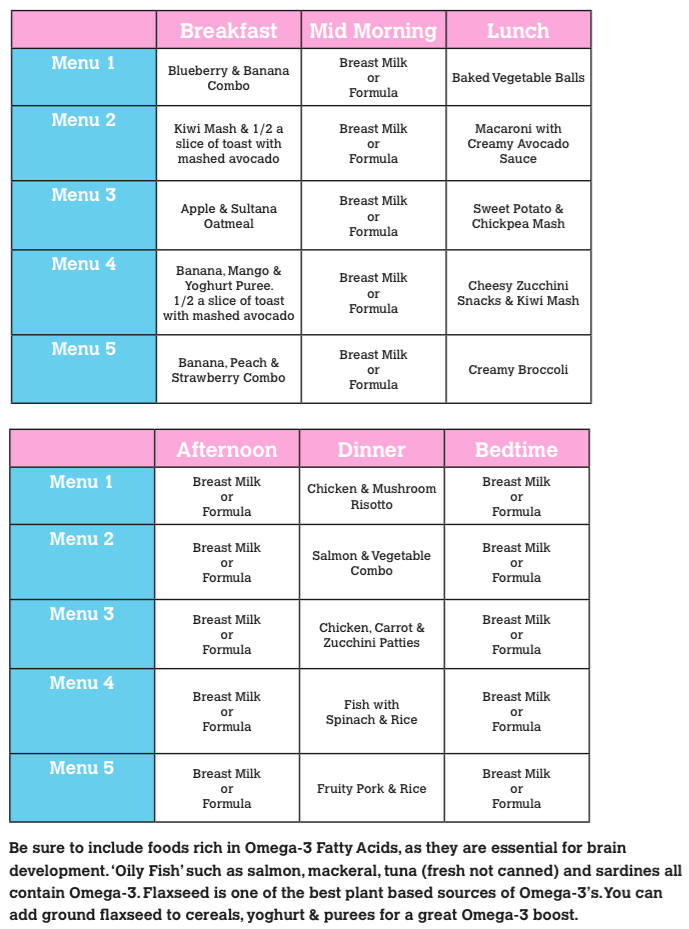 These foods contain easily absorbable forms of iron and zinc, which baby needs by 4 to 6 months, according to the AAP.
These foods contain easily absorbable forms of iron and zinc, which baby needs by 4 to 6 months, according to the AAP.
At around 9 months, baby should have already worked their way up to a variety of foods, including cereal, vegetables, fruits, meats, eggs and fish (see below regarding the last two). (Keep in mind, though, that baby will still get the majority of their nutrients from breast milk or formula until age one.) By now, baby will probably settle on three meals a day along with two snacks. Let them consume about 4 ounces of solids at each meal (equivalent to a small jar of strained baby food) and about half that amount for each snack.
Save honey and cow’s milk for after baby’s first birthday—there’s a risk for infant botulism with honey (a type of bacterial poisoning), and baby’s tummy isn’t prepared to digest large amounts of cow’s milk until they’re about one year old. Avoid adult processed foods and foods that are choking hazards (such as sticky foods, like large gobs of peanut butter; hard foods that are difficult to gum, like raw vegetables, nuts, seeds and popcorn; and round, slippery foods that haven’t been cut up, like grapes and cherry tomatoes).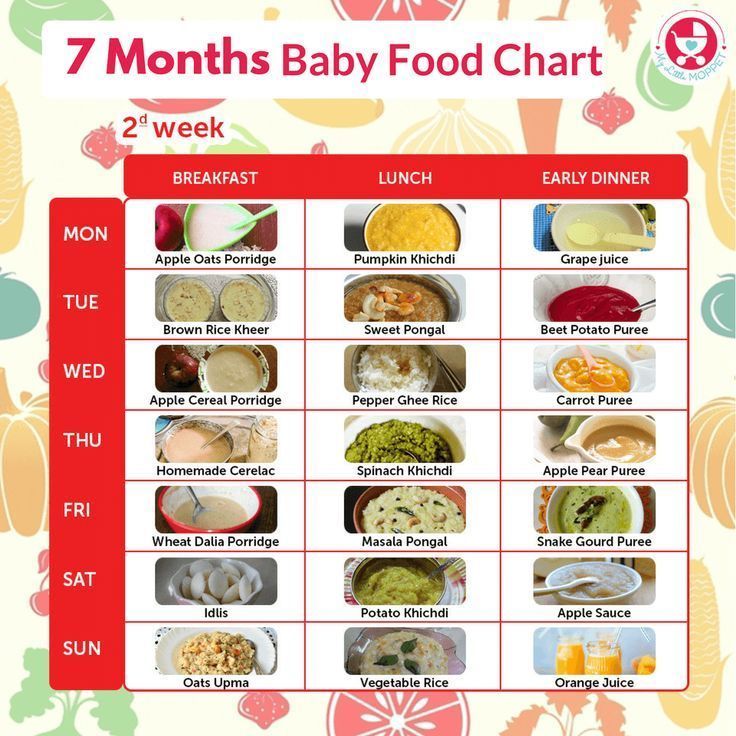 Instead, the first foods for baby, and those in the months that follow, should be soft and served mashed, pureed or (once baby seems ready to move up from the really mushy stuff) cut up into really little bits. “There’s pretty much free reign at that point,” Kupersmith says.
Instead, the first foods for baby, and those in the months that follow, should be soft and served mashed, pureed or (once baby seems ready to move up from the really mushy stuff) cut up into really little bits. “There’s pretty much free reign at that point,” Kupersmith says.
Introducing Solids Chart
Hesitant about improvising your first foods for baby? That’s okay too. If you prefer an “introducing solids chart” to help you plan out baby’s path, the guide below can come in handy.
Image: The Bump
Introducing Allergenic Foods
Much of the confusion around when to start baby food stems from questions concerning allergenic foods. These are foods that babies are most often allergic to. The major culprits include dairy, eggs, fish, peanuts and tree nuts. In the past, parents were advised to hold off on exposing baby to these foods, but now doctors recommend introducing them early, often and in age-appropriate format, which means starting off with purees and soft textures.
“Dairy is an easy starting point, given options such as yogurt and cheese,” says David Stukus, MD, director of the Food Allergy Treatment Center at Nationwide Children’s Hospital and a spokesperson for the American College of Allergy, Asthma, & Immunology. You can also try scrambled eggs in small amounts, although baby may not be too pleased with the texture at first.
As far as peanut products go, the National Institutes of Health issued new guidelines in 2017 that encourage parents of children at high risk for peanut allergies to incorporate them into baby’s diet at 4 to 6 months of age. Giving these babies peanut products before the age of one actually decreases their risk of developing a peanut allergy before age 5 by 81 percent, compared to kids who are introduced to peanuts later in life. Parents of kids without the food allergy risk can start peanut products whenever they’d like, as long as the nuts are in an age-appropriate form: Peanut butter can be thinned out with water or mixed into a fruit or vegetable puree, and peanut powder can also be mixed into cereal and fruits. Don’t give whole peanuts or pieces of peanuts, since they’re a choking risk.
Don’t give whole peanuts or pieces of peanuts, since they’re a choking risk.
Allergic reactions to food are never just a fluke; they will happen with every exposure. Symptoms can range from mild (such as a rash or vomiting) to severe (such as trouble breathing). If baby has a food allergy, you’ll notice a reaction within minutes or up to two hours after eating the problematic food, Stukus says. If the symptoms are severe, call 911 right away. Otherwise, talk to your pediatrician; she can help confirm whether it’s an allergy or some other type of condition (such as a viral illness).
Expert bios:*
Lauren Kupersmith, MD, IBCLC, is a pediatrician and clinical instructor at Hassenfeld Children’s Hospital at NYU Langone in New York City, as well as a certified lactation consultant. She earned her medical degree from New York Medical College in 2005.
David Stukus, MD, is the director of the Food Allergy Treatment Center at Nationwide Children’s Hospital, an associate professor of pediatrics in the division of allergy and immunology and a spokesperson for the American College of Allergy, Asthma, & Immunology. He earned his medical degree from University of Pittsburgh School of Medicine in 2002.
He earned his medical degree from University of Pittsburgh School of Medicine in 2002.
Updated January 2020
Please note: The Bump and the materials and information it contains are not intended to, and do not constitute, medical or other health advice or diagnosis and should not be used as such. You should always consult with a qualified physician or health professional about your specific circumstances.
Detailed list of all foods for the first 90 days of introduction of complementary foods for a child.
Download the table of complementary foods in PDF format:
- Zucchini. Zucchini puree contains only 24 kcal per 100 grams of finished product. Proteins -0.6; fat - 0.3; carbohydrates - 4.6. Contains calcium, magnesium, vitamins A, C, B6 and iron. To save vitamins, we will prepare the first puree for a child for a couple. Zucchini cooks quickly, 10 minutes is enough. The first serving is 5 grams (a teaspoon), even less, at the tip of a spoon.
 We'll give you a taste of the new flavor. Take a small circle of zucchini (we choose the smallest, youngest baby zucchini, the puree will be sweet), wash well (you don’t need to clean and remove the seeds from young zucchini), cook for 10 minutes for a couple and grind through a sieve. Let the child try. The feeding temperature should be around 40 degrees. nine0006 DEFINITELY try the puree yourself before giving it to a child! Not bitter, not sour, are there any strange aftertastes that may indicate a poor quality vegetable? We offer zucchini for 5-7 days according to the scheme: 5 grams - 10 grams - 20 - 40 - 60 - 60 - 60. The zucchini has passed the test! Let's put it aside for now and move on to the next product.
We'll give you a taste of the new flavor. Take a small circle of zucchini (we choose the smallest, youngest baby zucchini, the puree will be sweet), wash well (you don’t need to clean and remove the seeds from young zucchini), cook for 10 minutes for a couple and grind through a sieve. Let the child try. The feeding temperature should be around 40 degrees. nine0006 DEFINITELY try the puree yourself before giving it to a child! Not bitter, not sour, are there any strange aftertastes that may indicate a poor quality vegetable? We offer zucchini for 5-7 days according to the scheme: 5 grams - 10 grams - 20 - 40 - 60 - 60 - 60. The zucchini has passed the test! Let's put it aside for now and move on to the next product. - Cauliflower. Cauliflower puree contains 33 kcal per 100 grams of finished product. Proteins, fats and carbohydrates, respectively: 1.6 / 0.7 / 5.4. Contains calcium, magnesium, iron, vitamins C and B6. To save vitamins, we cook for a couple.
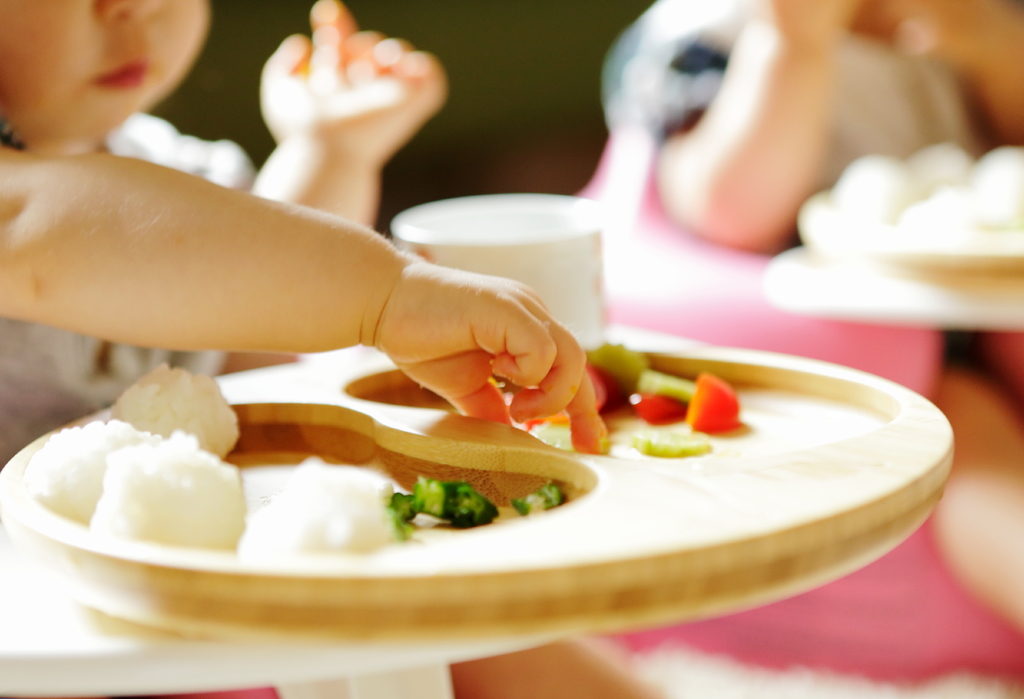 We divide the cabbage into small inflorescences, cook for 15 minutes. Grind the first portion (5 grams) on a sieve, prepare large portions with an immersion blender with the addition of boiled baby water, so that the consistency is the same as that of the zucchini. Cabbage, unlike zucchini, contains less water, so it needs to be added. We give according to the scheme: 5-10-20-40-60-60-60. Recall that it is not necessary to give all 7 days, five days will be enough to test for allergens. nine0010
We divide the cabbage into small inflorescences, cook for 15 minutes. Grind the first portion (5 grams) on a sieve, prepare large portions with an immersion blender with the addition of boiled baby water, so that the consistency is the same as that of the zucchini. Cabbage, unlike zucchini, contains less water, so it needs to be added. We give according to the scheme: 5-10-20-40-60-60-60. Recall that it is not necessary to give all 7 days, five days will be enough to test for allergens. nine0010 - Broccoli. For 100 grams of finished puree 34 kcal. Proteins 2.8; Fats 0.4; Carbohydrates 6.6. Broccoli contains a lot of vitamin A, as well as calcium, magnesium, iron and vitamin C. We prepare mashed potatoes according to the same principle as cauliflower.
- Buckwheat porridge. From vegetables to cereals. It's time to try the cereals. Previously, it was recommended that babies start complementary foods with cereals if they are not gaining weight well, or start complementary foods before six months.
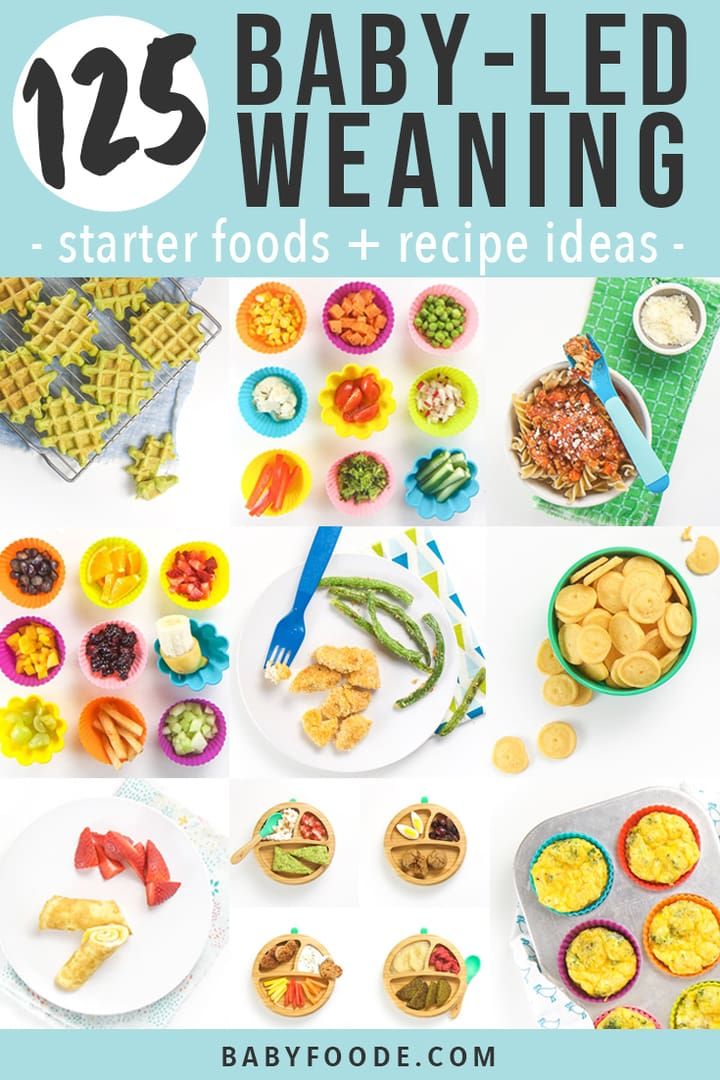 But it's all MYTH! Well, the baby will not start gaining better if instead of a portion of fatty milk he receives 60 grams of lean porridge cooked in water. Yes Yes! The first cereals are dairy-free, sugar-free and gluten-free! It is important! For the first test, it is still recommended to introduce special baby cereals, which are sold in stores. Why? Because cereals for children's cereals are not treated with rodenticides, unlike ordinary cereals on store shelves. Yes, and making flour from ordinary buckwheat and cooking 5 grams of such porridge will not be so easy as pouring half a teaspoon of prepared store-bought baby porridge with water, stir and give to the baby. Therefore, we suggest buying a pack of special children's dairy-free buckwheat for the first try and cook it according to the cooking method indicated on the package. nine0010
But it's all MYTH! Well, the baby will not start gaining better if instead of a portion of fatty milk he receives 60 grams of lean porridge cooked in water. Yes Yes! The first cereals are dairy-free, sugar-free and gluten-free! It is important! For the first test, it is still recommended to introduce special baby cereals, which are sold in stores. Why? Because cereals for children's cereals are not treated with rodenticides, unlike ordinary cereals on store shelves. Yes, and making flour from ordinary buckwheat and cooking 5 grams of such porridge will not be so easy as pouring half a teaspoon of prepared store-bought baby porridge with water, stir and give to the baby. Therefore, we suggest buying a pack of special children's dairy-free buckwheat for the first try and cook it according to the cooking method indicated on the package. nine0010 - Rice porridge. Same as buckwheat: dairy-free, gluten-free, salt-free and sugar-free. We look at the energy value on the packaging.

- Corn porridge. This porridge is the most high-calorie of the three, so it is still better to introduce it as the third one. The scheme is still the same as with vegetables: 5-10-20-40-60-60-60 (the last two days are optional). When the volume of any of the cereals reaches 40 and 60 grams, you can add a little already introduced vegetables to it (also up to 40 grams), so that the porridge is not too viscous and monotonous for the child (“in a dry bag”, as we usually say). nine0010
- Pumpkin. Puree and pumpkin will already contain 88 kcal per 100 grams of the finished product. Thus, we gradually raise the calorie content of products. Proteins / fats / carbohydrates - 1.7 / 6.2 / 6.3. We clean and cut it into cubes, steam the pumpkin, about 15 minutes. Puree is introduced as before 5-10-20-40-60-60-60. For portions of 40 and 60 grams, you can try to give it together with the already tested porridge and bring the total volume up to 100 grams.

- Apple. It's time to taste fruit. Why weren't they introduced earlier? Because, from birth, a child has a love for sweets, and if you start complementary foods with fruits, then there is a high probability that you will eat vegetables yourself later. We start complementary foods from the most tasteless foods incrementally. The finished puree contains 85 kcal per 100 grams of the finished product. How to cook: wash, peel, cut apples and send to a double boiler or cook in boiling water for 10 minutes (a couple more vitamins will be preserved). Scheme 5-10-20-40-60-60-60. By the way, with regard to fruits, a dose of 60, maximum 80 grams for a child up to a year is quite sufficient. If we then increase the portions of vegetables and cereals, then we will leave the fruits. A large amount of sugar is not good for a child. Up to 40 grams we give applesauce as a separate dish, from 40 grams and more we mix with cereals. Now we will gradually increase the volume and replace breakfast with porridge with fruit, seasoned with a small amount of butter (at the rate of 2 grams of butter per 100 grams of porridge).
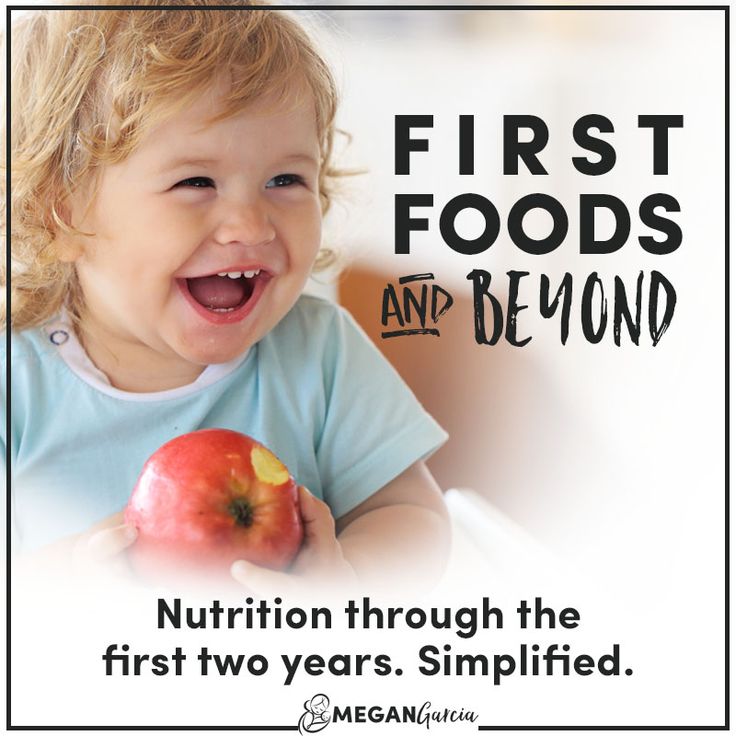 nine0010
nine0010 - Rabbit. It's time to introduce meat! At this point, the baby should be about 8 months old. It is recommended to start with a rabbit, as this is the most dietary meat. How to cook: we twist the meat in a meat grinder, form small meatballs and weld them a little in boiling water. It’s good if you have a kitchen scale at home and you can immediately prepare meatballs for the required 5-10-20-40 and 50 grams. We throw the boiled meatballs into a colander so that the glass is excess water and they cool, then we freeze. Our semi-finished product is ready! The first 5 and 10 grams are given separately. Boil or steam again and grind with a blender. Starting from 20 grams, grind together with the introduced vegetables. Now you can gradually increase the portions and replace lunch with vegetables and meat seasoned with a small amount of vegetable oil (at the rate of 1 teaspoon per 100 grams of vegetables). Meat, unlike all other products that are necessarily introduced in the first half of the day, is introduced at lunchtime.
 nine0010
nine0010 - Prunes. We prepare mashed potatoes in the same way as from apples, but first, prunes need to be washed, peeled and soaked for a couple of hours in water, then steamed and chopped with a blender. Portions are the same as for an apple: 5-10-20-40-60-60-60. Starting from 40 grams, mix with porridge.
- Turkey. We choose the fillet and give it according to the principle of the rabbit.
- Pear, banana, apricot, peach, plum. We introduce these fruits one by one according to the same principle as we introduced apple and prunes. nine0010
So, we have sorted out the safest products for the baby! Selected according to our climate, according to their energy value, composition and vitamin content. To put together a correct balanced diet, you need to know some WHO (World Health Organization) recommendations for complementary foods:
- At 6-8 months, the child should receive 60% kcal from breast milk and 40% kcal per day from complementary foods ;
- At 9-11 months, the baby should receive 45% kcal from breast milk and already 55% kcal per day from complementary foods ;
- The volume of the baby's stomach is approximately equal to 30 ml/kg of the baby's weight;
- At 6-8 months, smoothly go to 2 meals based on complementary foods (breakfast and lunch) and the minimum energy density of the meal should be 0.
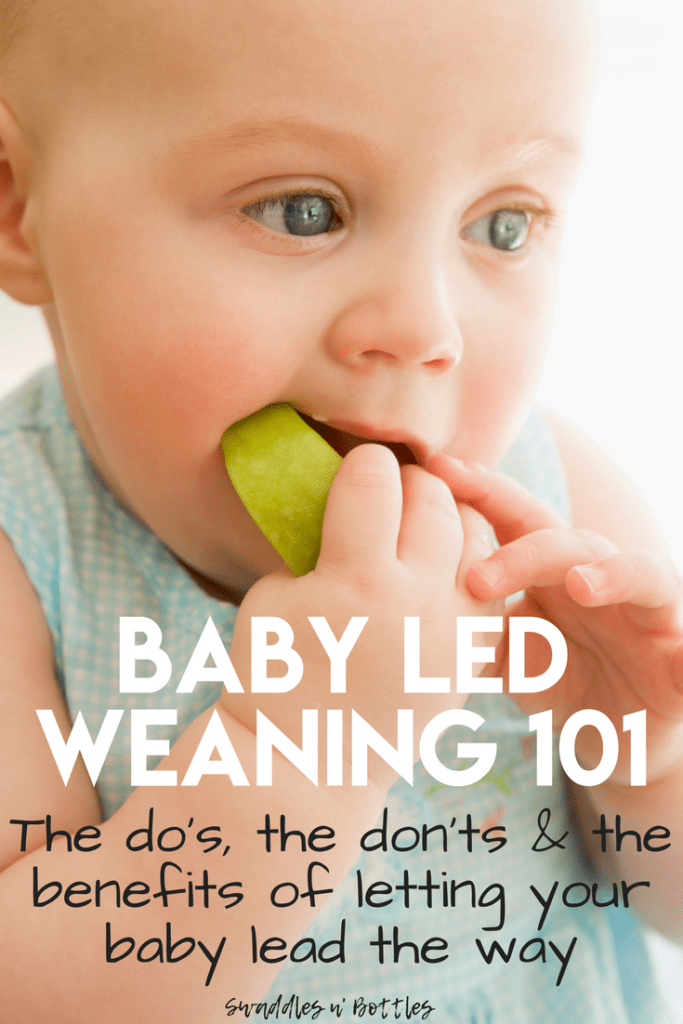 9 kcal / g for breastfeeding or 1.7 kcal / g for artificial feeding;
9 kcal / g for breastfeeding or 1.7 kcal / g for artificial feeding; - Protein requirements for babies 6-9months 1.25 g/kg body weight;
- Fats should make up 30-40% of the daily calorie intake of the entire diet.
Download the PDF feeding table:
Categories -feed feed Malyuk
90,000 for months, which products to feed the child from 6 months02.08.2022
≈ 6 min read time
Contents
- When to introduce complementary foods to a child?
- Why is complementary foods included in a child's diet?
- The sequence of introduction of complementary foods nine0010
- Complementary foods at 4-5 months
- Complementary foods at 6 months
- Complementary foods at 7 months nine0010
- Complementary foods at 8 months
- Complementary foods from 9 months to 1 year nine0005 Complementary feeding table by months for breastfeeding and artificial feeding
Not only a lack of nutrients, but also their overabundance can interfere with the proper development of the baby. Pediatric nutrition studies how specific micronutrients affect the functioning of organs and systems, cells and metabolism. For example, in accordance with new scientific data, complementary foods have been adjusted by months in the past few years. nine0003
Pediatric nutrition studies how specific micronutrients affect the functioning of organs and systems, cells and metabolism. For example, in accordance with new scientific data, complementary foods have been adjusted by months in the past few years. nine0003
It is important that it should be administered against the background of ongoing breastfeeding, if possible. According to WHO experts, breast milk remains the best food for the baby in terms of composition, in many ways it serves as “health programming” for many years. Therefore, it is ideal to breastfeed for as long as possible.
Complementary feeding of children up to a year is food, in addition to mother's milk or infant formula, which is additionally introduced into the baby's diet in the first year of his life. nine0003
Children develop individually, so pediatricians do not specify a specific “age of start”. But there is a time interval, the so-called. "critical window". This is not just the most favorable, but an extremely important period for "acquaintance" with new products and textures.
Introduction of complementary foods The European Society of Pediatric Gastroenterology, Hepatology and Nutrition ESPGHAN advises to start between 17 and 26 weeks of a baby's life. Approximately these terms are also called by domestic experts: from 4 to 6 months. nine0003
Before 4 months, introduce complementary foods early:
- the mucosa of the small intestine is too permeable;
- digestive enzymes are not ripe;
- the level of immunity is still insufficient, so the risk of an undesirable reaction is increased.
After 6 months, introducing the first complementary foods is somewhat late:
- possible risk of nutritional deficiencies; nine0005 it will be more difficult to develop food tolerance; ability to tolerate products well;
- there may be a delay in mastering the chewing skill, and it is also needed in order for the speech apparatus to develop correctly;
- in order for food to cover the deficiency of essential substances, new products will have to be introduced faster.
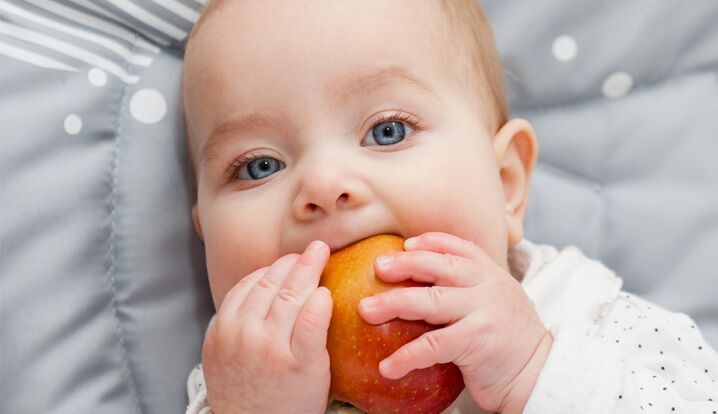 This will create an unnecessary burden on the body.
This will create an unnecessary burden on the body.
The optimal time to start introducing complementary foods is 5 months, but you need to focus on the baby. The fact that he is ready to try something other than mother's milk or infant formula can be understood by the following signs: nine0003
- the child holds his head, can be fixed in a sitting position;
- teething begins;
- subsides so-called. spoon ejection reflex - an evolutionary mechanism that prevented an infant from accidentally swallowing an object;
- baby looks at new food with curiosity;
- the child can reach his mouth with his hand, and, taking a pacifier or a toy in his mouth, makes chewing, champing movements. nine0089
- we offer a new product from 1/2 teaspoon, in 5 days-a week we gradually increase to the volume recommended at a certain age;
- we monitor tolerance - for this we introduce a dish in the 1st half of the day;
- porridge is introduced first from 1 type of cereal, dairy-free, gluten-free, diluted with breast milk or infant formula. When different types of such cereals have already been “tested” separately, cereals from two types of gluten-free cereals can be introduced. In the same way, we “acquaint” the baby with cereals from gluten cereals. Porridges remain dairy-free, diluted with breast milk or infant formula; nine0176
- we offer mashed potatoes to start with single-component ones - from one type of vegetable. Then - from another, and after that you can switch to mashed potatoes from several familiar types;
- introduce only one new product at a time;
- do not sweeten dishes and do not add salt;
- industrial prepared meals are preferred, as they have passed the security check;
- spoon-feeding before breastfeeding/formula feeding; nine0010
- an unfamiliar product should not be offered for acute infection; wait at least 3 days before and after vaccination;
- at 9–10 months, gradually replace the puree-like texture with a finely ground one.
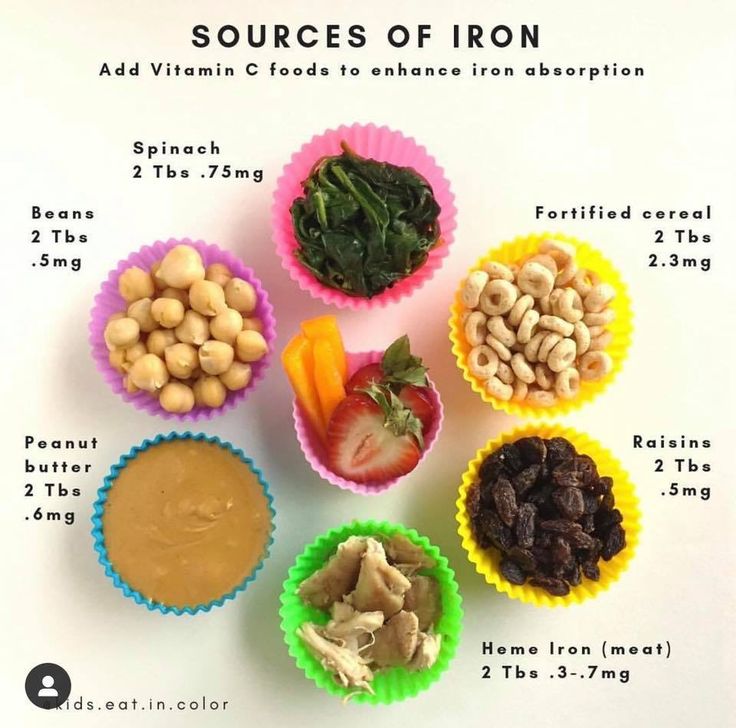
- The program for optimizing the feeding of children in the first year of life in the Russian Federation. Moscow, 2019. https://minzdrav.midural.ru/uploads/document/4908/optimizatsii-vskarmlivaniya-detej-pervogo-goda-zhizni.pdf
- A.A. Kamalova. Updated European recommendations for the introduction of complementary foods in children - a topic for reflection. Help for the practitioner.
 Russian Bulletin of Perinatology and Pediatrics. 2017 https://www.ped-perinatology.ru/jour/article/viewFile/597/581
Russian Bulletin of Perinatology and Pediatrics. 2017 https://www.ped-perinatology.ru/jour/article/viewFile/597/581 - Feeding introduction. Union of Pediatricians of Russia https://www.pediatr-russia.ru/parents_information/soveti-roditelyam/ratsiony-pitaniya-v-razlichnye-vozrastnye-periody/vvedenie-prikorma.php
- Nutrition of children of the first year: topical issues and new trends. Ed. I.N. Zakharova https://remedium.ru/doctor/pediatrics/Pitanie_detey_pervogo_goda_aktualnye_voprosy_i_novye_trendy/
- A.A. Baranov. Pediatrics. https://medicknow.com/bookstudent/pediatriya-baranov/7.php
- I.N. Zakharova, T.E. Borovik, L.L. Stepurina et al. Grain-based industrial products in the nutrition of young children.
 Tutorial. http://irbis.rmapo.ru/UploadsFilesForIrbis/c2e051b430218d5bda9d3378e52fdcdc.pdf
Tutorial. http://irbis.rmapo.ru/UploadsFilesForIrbis/c2e051b430218d5bda9d3378e52fdcdc.pdf - I.N. Zakharova, Yu.A. Dmitriev. Porridge is the most important type of complementary foods for young children. Issues of modern pediatrics https://cyberleninka.ru/article/n/kasha-vazhneyshiy-vid-prikorma-u-detey-rannego-vozrasta/viewer
- Feeding introduction. Russian Union of Pediatricians https://www.pediatr-russia.ru/parents_information/soveti-roditelyam/ratsiony-pitaniya-v-razlichnye-vozrastnye-periody/vvedenie-prikorma.php
- S.G. Makarova. Practical recommendations for the introduction of complementary foods. Pediatric pharmacology. 2015 https://cyberleninka.ru/article/n/prakticheskie-rekomendatsii-po-vvedeniyu-prikorma/viewer
- Sophie Rehault-Godbert, Nicolas Guyot, and Yves Nys.

By 4-5 months, the baby already weighs twice as much as at birth, and moves much more actively. He needs more energy and nutrients. Per 1 kg of body weight, this need for a baby in the first year of life is higher than in all subsequent periods.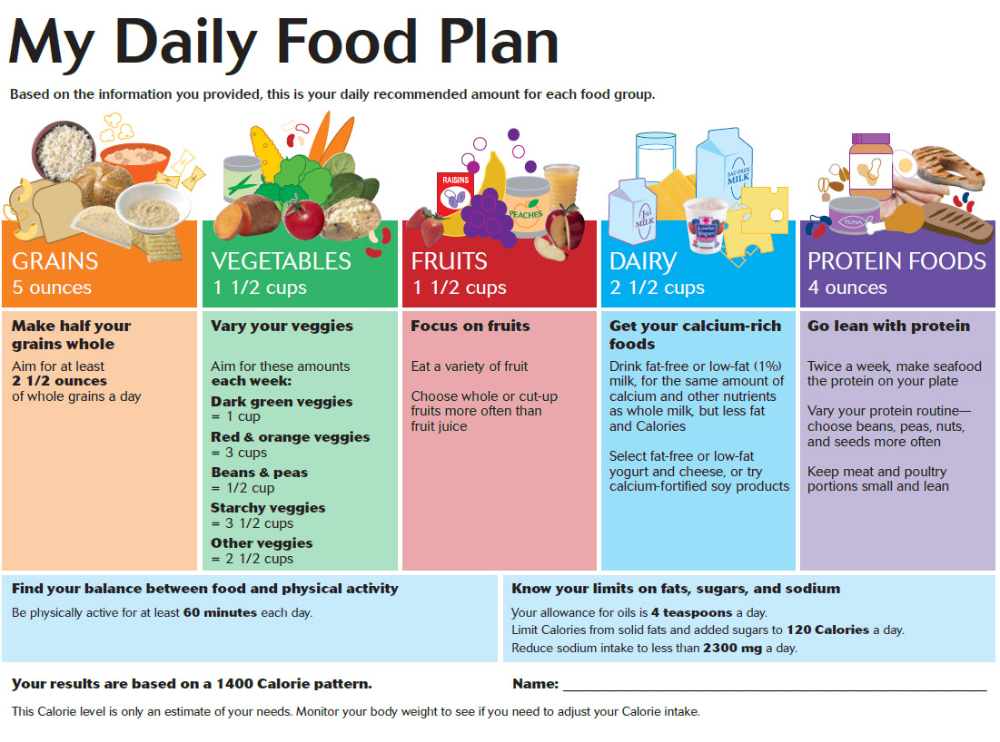
But her mother's milk can no longer provide. Not only because the growing child already lacks the vitamins and microelements received - iron, calcium, zinc, phosphorus, etc. In the women's milk itself, there is gradually less protein, amino acids, fatty acids. Children who feed exclusively on their mother's milk, from six months already are at risk of the so-called. iron deficiency states. nine0003
From how adequately the diet of a child up to a year is made, his health depends “not only during this period of time, but throughout his life,” says the National Program for Optimizing Feeding. This is the main document developed by leading domestic experts who are guided, incl. including WHO experts.
Monthly feeding schedule
Taking into account the individual characteristics of the baby, the doctor may recommend offering some products a little earlier - or, conversely, a little later than indicated in the scheme. But most products are quite strictly "tied" to a certain age - more precisely, to the degree of maturity of the body and the baby's readiness to get acquainted with them. And readiness in each specific age is different. nine0003
And readiness in each specific age is different. nine0003
Complementary feeding rules - universal:
Five months of age is the best time to start weaning. 4 months is usually too early, and only a doctor, taking into account certain indications, can recommend this.
We start with mashed vegetables or porridge. Why exactly - depends on the health of the baby, his nutritional status, the development of the digestive system. If the body weight is lower than expected, the stool is quickened - it makes sense to choose ready-made dairy-free cereals with a complex of micronutrients as the first dish. If the mass is excessive, frequent constipation - vegetable puree is suitable. nine0003
Products should be as neutral as possible, easily digestible.
Rules for introducing vegetables into the diet
The first puree should be from only one type of vegetable with tender fiber. Zucchini, cauliflower or broccoli will do. After making sure that the child tolerates it well and eats the dish with appetite, after a week feel free to introduce the second type of vegetable. You can separately give mashed potatoes from the second vegetable at the end of feeding familiar mashed potatoes. You can also immediately add a little bit of puree from an unfamiliar vegetable to an already familiar vegetable. nine0003
You can separately give mashed potatoes from the second vegetable at the end of feeding familiar mashed potatoes. You can also immediately add a little bit of puree from an unfamiliar vegetable to an already familiar vegetable. nine0003
Whichever method you choose, in any case, the second puree is also introduced gradually over 5-7 days. At the same time, every day it is necessary to increase the share of the new puree in the diet and proportionally reduce the amount of the already familiar one. For example, gradually add broccoli puree to mashed potatoes from an already familiar zucchini, or vice versa.
By the same principle, over time, you need to introduce other vegetables: cauliflower, carrots, pumpkin.
When the volume of vegetable puree reaches 100 g, flavor it with a drop of vegetable oil. nine0003
Rules for the introduction of cereals
You need to start with gluten-free dairy-free porridge from only one type of cereal: rice, buckwheat or corn. Be sure to cook porridge with breast milk or infant formula. Cow's milk cannot be used for making porridge up to a year, and porridge "on the water" has a low nutritional value - the child will not receive important nutrients that he usually receives from breast milk or formula, will not eat up and quickly get hungry.
Be sure to cook porridge with breast milk or infant formula. Cow's milk cannot be used for making porridge up to a year, and porridge "on the water" has a low nutritional value - the child will not receive important nutrients that he usually receives from breast milk or formula, will not eat up and quickly get hungry.
Gradually, an unfamiliar one is mixed with an already familiar type of cereal, turning porridge into a multicomponent product. nine0003
It is advisable to choose an industrially prepared dish: it has added micronutrients that are key for growth and development. For example, much-needed iron.
By six months, the baby already eats several types of vegetables and cereals. We continue to expand their “palette” and gradually introduce new products. For example, we give dairy-free gluten-containing porridge - for example, oatmeal. It must also be diluted only with breast milk / infant formula. From six months we begin to "get used" to mashed meat. nine0003
Rules for introducing meat
Meat is a source of heme iron. Unlike non-heme from plant foods, it is better absorbed. You need to introduce meat from dietary species: turkeys or a rabbit. Then gradually add other types of meat.
Unlike non-heme from plant foods, it is better absorbed. You need to introduce meat from dietary species: turkeys or a rabbit. Then gradually add other types of meat.
Beef is the richest in iron: if women's milk contains 0.04 mg of iron per 100 g, then beef contains about 3 mg per 100 g. But if the baby does not tolerate beef, we replace it with lean pork, lamb. nine0003
Important: finished products differ in the amount of raw meat. In canned meat it is 40-65%, in meat and vegetable - 10-20%, and in plant-based canned food with meat - less than 10%. When compiling a menu for a baby, you need to compare these volumes with those recommended in the table for months. In addition, mom must definitely check that there is no salt in the composition.
We continue to vary the types of vegetables, cereals and meat puree. Already confidently trying fruit puree. In addition, there is another fundamentally new "serious" product - egg yolk. nine0003
Rules for introducing fruit into the diet
Fruits are one of those foods where the opinion of experts has changed in recent years.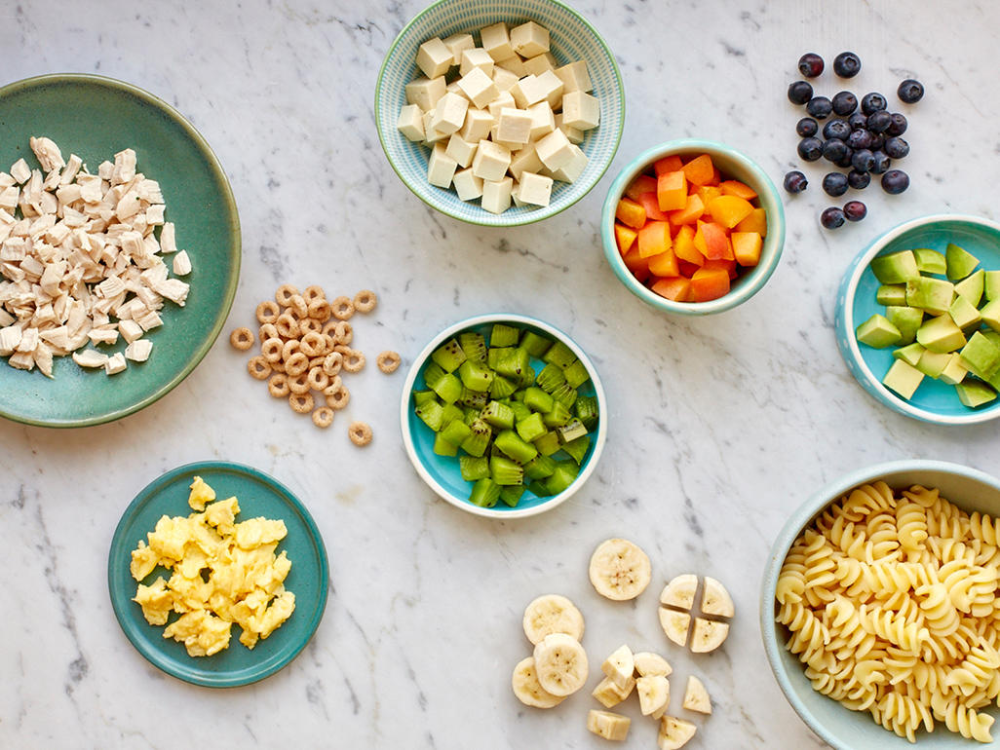 Previously, fruits were introduced at the earliest stages, but now experts recommend giving them to the baby only after meat. The fact is that love for the sweet taste, unlike other tastes, is innate in us. Fruit can become such a clear favorite that it can be difficult to introduce your baby to savory foods.
Previously, fruits were introduced at the earliest stages, but now experts recommend giving them to the baby only after meat. The fact is that love for the sweet taste, unlike other tastes, is innate in us. Fruit can become such a clear favorite that it can be difficult to introduce your baby to savory foods.
You need to start with puree from non-exotic fruits for Russia: apples or pears. Gradually add puree from other fruits to them. nine0003
Rules for the introduction of egg yolk
The egg belongs to highly allergenic products, so it is administered when the body is already sufficiently prepared. However, egg intolerance is still observed in 2% of children.
You need to feed the baby only with boiled yolk: most of the vitamins and minerals are concentrated in it, but allergen proteins are found mainly in the protein.
We begin to give the yolk literally from a crumb, mixing it into morning porridge and gradually increasing the volume of the yolk to a quarter.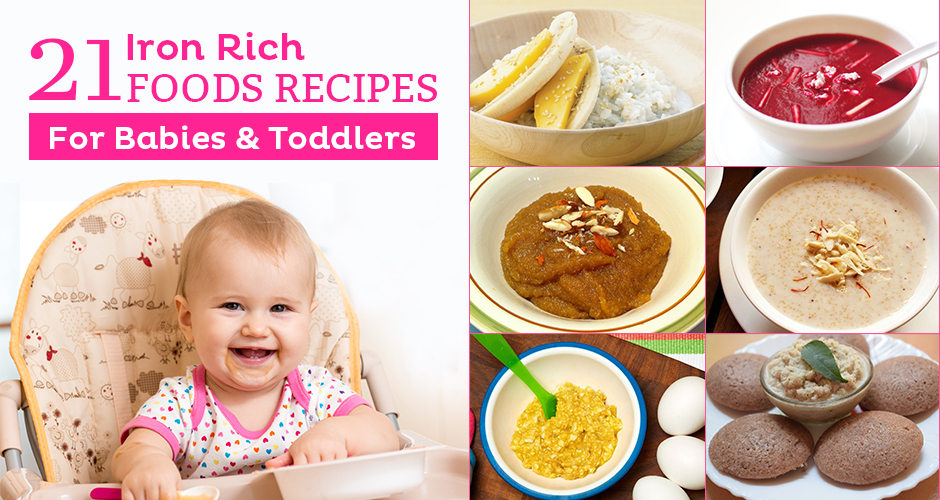 nine0003
nine0003
An eight-month-old baby is mastering the remaining new staple foods. Do not forget to gradually increase the portion size and variety of dishes in accordance with age recommendations. A growing baby also has an increased appetite, so you need a little more porridge, meat, and other products. However, it is important not to "get carried away" and not overfeed. For example, a portion of the yolk can be increased to half.
Children's non-adapted sour-milk dishes are introduced from new products - kefir, yogurt, biolact. etc. If cottage cheese has not been introduced before, then now is the time for it. It is imperative to start with the unsweetened tastes of fermented milk products, otherwise it will be difficult for the baby to “convince” to try, for example, unsweetened cottage cheese. And at this age, the child already needs to “get acquainted” with another unsweetened and most important dish - fish. nine0003
Only after 8 months you can give the baby fruit juice - and then, you need to offer it quite a bit and at the end of feeding, after the main course (for example, meat).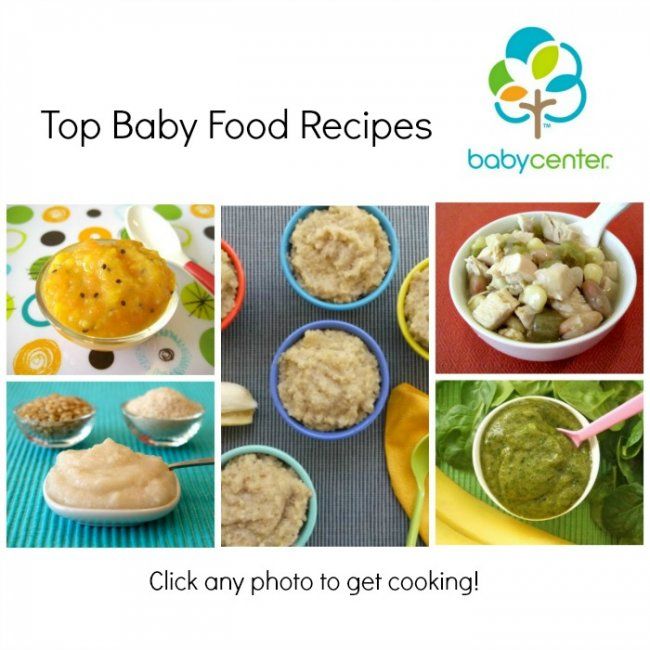
Rules for introducing fish
Fish puree is introduced as an alternative to meat, once or twice a week. If we usually give meat puree in the middle of the day along with vegetable puree, now we simply offer fish instead of meat. Remember that this product can cause allergies, so we carefully monitor the reaction of the body. nine0003
The best for a child is mashed ocean white fish: hake, sea bass, cod. From red varieties it is better to choose salmon, from river varieties - pike perch.
By 9-10 months, the baby got acquainted with all the main products. The diet continues to expand, now due to a different texture of the product. From a puree, we gradually move on to a finely ground texture, and then coarsely ground. For example, meatballs can be a meat dish.
nine0176
Complementary feeding of an infant for months should be accompanied by supplementary feeding - breast milk or mixtures. According to the recommendations of the ESPGHAN Nutrition Committee, when to introduce complementary foods and in what sequence does not depend on the type of feeding. Therefore, feeding a child by months with breastfeeding is exactly the same as feeding by months with artificial feeding.
Therefore, feeding a child by months with breastfeeding is exactly the same as feeding by months with artificial feeding.
There is one difference, but it does not apply to the complementary foods themselves. Women's milk itself "adjusts" to changes in the body of the baby, and milk formulas are adapted in the same way by manufacturers. Therefore, the mother must ensure that the mixture is appropriate for the current age of the child. nine0003
Complementary foods Table by month up to a year (in g/ml)
| Product/dish | 4–5 months
| 6 months | 7 months | 8 months nine0003 | 9–12 months |
| Vegetable puree
| 10–150 | 150 | 150 | 150 nine0295 | 150 |
| Porridge
| 10–150 | 150 | 150 | 180 | 200 |
| Meat puree / boiled meat
|
| 5–30/ 3–15 | 40–50/20–30 | 60–70/30–35 nine0295 | 80–100/40–50 |
| Fruit puree (not as first food)
| 5–50 | 60 | 70 | 80 nine0003 | 90–100 |
| Yolk
|
|
| 1/4 | 1/2 | nine0292 |
| Cottage cheese
|
|
|
| 10–40 | fifty nine0003 |
| Fish puree
|
|
|
| 5–30 | 30–60 9029five |
| Fruit juice
|
|
|
| 5–60 | 80–100 |
| Kefir, other non-adapted dairy drinks for children
|
|
|
| 200 | 200 nine0295 |
| Wheat bread, crackers
|
|
|
| five | 10 | nine0318
| Vegetable oil (for vegetables)
| 1–3 | five | five | 6 | 6 |
| Butter (for porridge)
| 1–3 | 4 | 4 | five | five |
Feeding menu by months can be found on the website of the Union of Pediatricians of Russia.
Each product has its own deadline, but in some cases there are exceptions. For example, it is better to introduce fruit puree after meat, i. from six months, but you can add quite a bit to the porridge earlier - if the baby has a poor appetite or constipation. Cottage cheese should be introduced from 8 months, but in some cases, on the advice of a pediatrician, from six months.
Your doctor can help you adjust the chart to your baby's needs. nine0003
References






